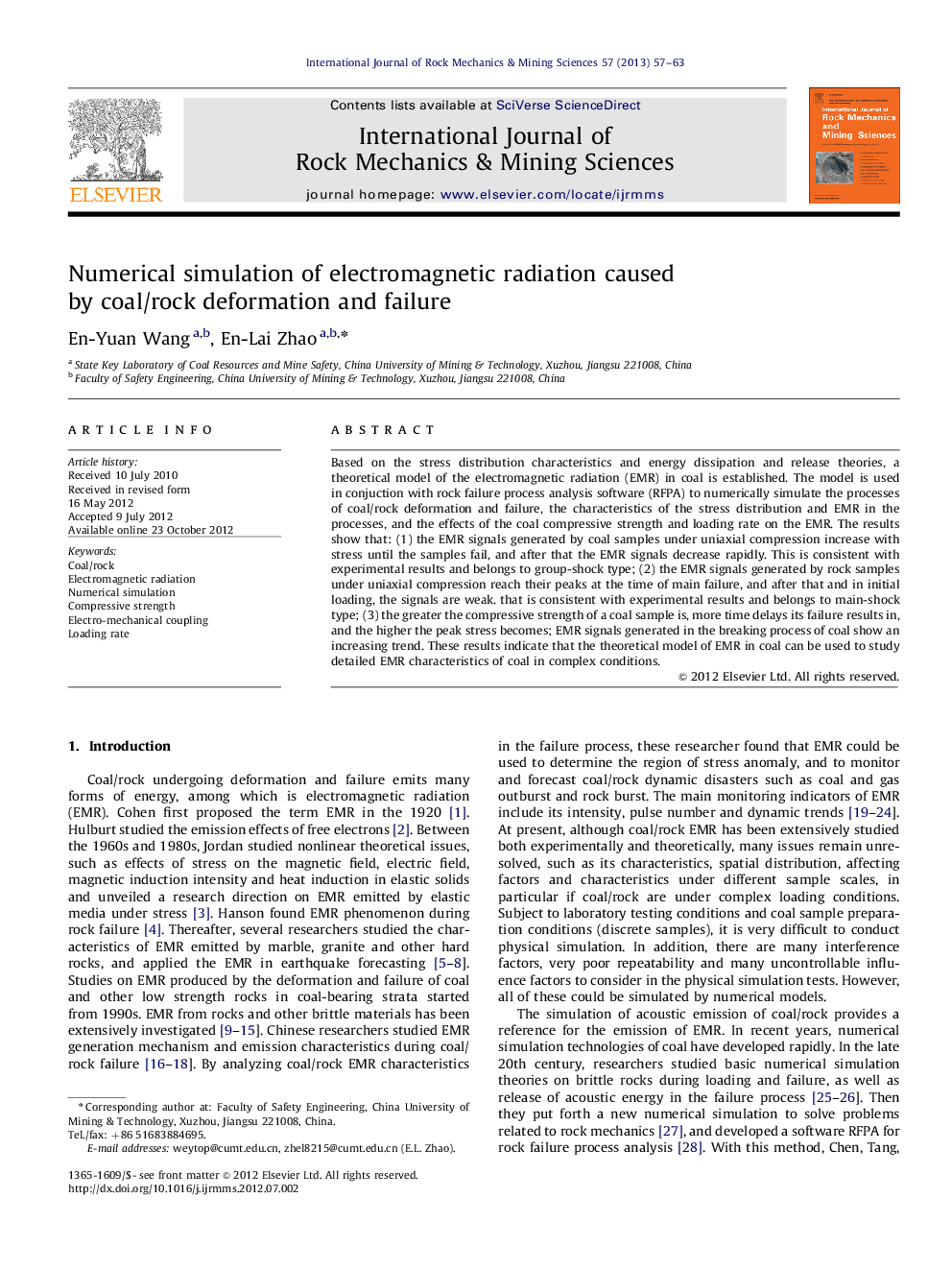| Article ID | Journal | Published Year | Pages | File Type |
|---|---|---|---|---|
| 809474 | International Journal of Rock Mechanics and Mining Sciences | 2013 | 7 Pages |
Based on the stress distribution characteristics and energy dissipation and release theories, a theoretical model of the electromagnetic radiation (EMR) in coal is established. The model is used in conjuction with rock failure process analysis software (RFPA) to numerically simulate the processes of coal/rock deformation and failure, the characteristics of the stress distribution and EMR in the processes, and the effects of the coal compressive strength and loading rate on the EMR. The results show that: (1) the EMR signals generated by coal samples under uniaxial compression increase with stress until the samples fail, and after that the EMR signals decrease rapidly. This is consistent with experimental results and belongs to group-shock type; (2) the EMR signals generated by rock samples under uniaxial compression reach their peaks at the time of main failure, and after that and in initial loading, the signals are weak. that is consistent with experimental results and belongs to main-shock type; (3) the greater the compressive strength of a coal sample is, more time delays its failure results in, and the higher the peak stress becomes; EMR signals generated in the breaking process of coal show an increasing trend. These results indicate that the theoretical model of EMR in coal can be used to study detailed EMR characteristics of coal in complex conditions.
► A theoretical model of the electromagnetic radiation (EMR) in coal is established. ► EMR signals generated by coal samples under uniaxial compression increase with stress until the samples fail. ► After failure, the EMR signals decrease rapidly. ► The greater the compressive strength of a coal sample is, the greater the EMR signals generated.
